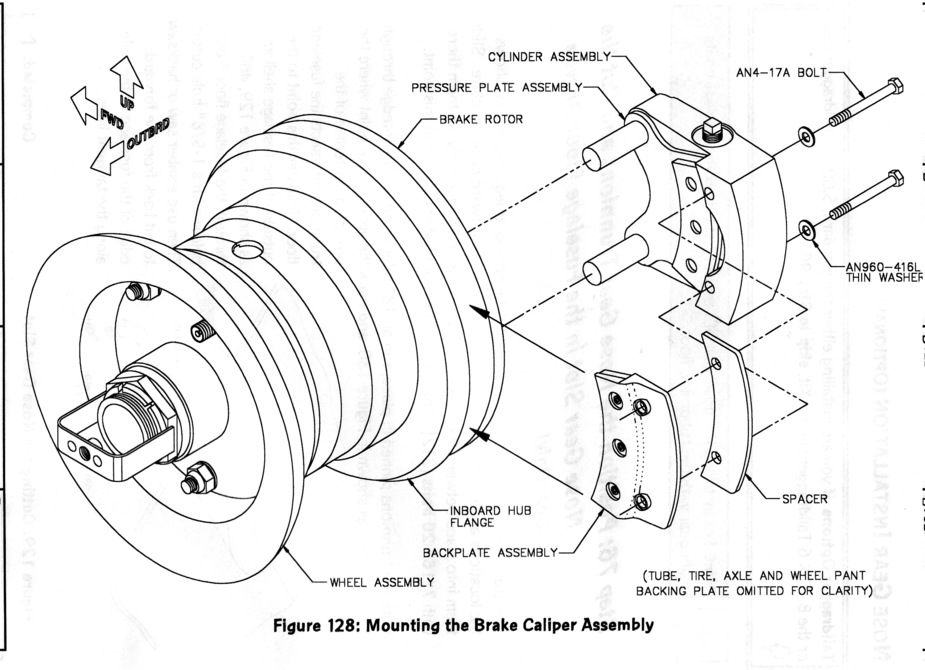I’ll start a new thread on this as my question is slightly different from the technical “parts” help I asked for on the Cleveland 30-55 thread.
What happened to my Piper Archer is that during power checks there was a large “clunk” and the brakes failed. This was 47 hours after the Annual where I know the brakes were checked and around 100 hours since new pads were put on. If things would have lasted just one more trip I’d have spotted it during the 50 hour check when the wheel arches come off.
The Callipers on one side split apart and this was the first significant mechanical failure I had ever experienced on my circa 39 year old Aircraft in 3 1/2 years.
I have been a little shocked about this as I pride myself on a well maintained Aircraft. This week when the brakes get fixed I’m putting new bolts in both sides. I have since heard of a similar mode of brake failure from somebody else and I was wondering if anybody else has experienced this?
I have read section 2-G3 of the Piper Archer service manual and whilst there are detailed instructions on the cleaning and relining of the brakes/ the tolerance of the disc etc, there are no life limits I can see about the bolts that hold the Callipers together. The bolts are item number 103-11600 from Airparts and cost just over £ 4 each retail – There are a lot of Aircraft using Cleveland Brakes so if I knew last week what I know now, I’d have changed the bolts as part of planned maintenance.
Has anybody experienced this before – is this common or was I unlucky? – Perhaps my experience can help others do a simple 5 minute job at the next 50 hour check which will save them a whole load of hassle in the future
I assume the bolts your refer to are the AN4-17A bolts on this diagram. I have heard of cases in which they become unscrewed and in one case fell out leading to complete brake failure. Remedies are to put red Loctite on the threads or use drilled head bolts (AN4H-17A) and safety wire them. I did the latter as I need brakes for steering having a castering nosewheel.

While you have the caliper dismantled you might check the O-ring on the puck, which I call a piston; it squeezes the pads onto the brake disk. They are specified to last 15 years, but when they leak you will lose all your brake fluid. You can see that this happened to me.
Simon
Also these brakes are extremely easy to service – it’s worth disassembling them and cleaning them annually and periodically renewing the O-rings (they are cheap). Otherwise you will go to your aircraft and find a puddle of brake fluid by the wheel just at the moment it’s least convenient, such as being 1500nm from home!
One of the strangest things about brakes is that the red aircraft brake fluid (Shell 41) is actually significantly cheaper than car brake fluid. I think it’s the only aircraft related thing that’s cheaper than the same thing for a car!
simon32 wrote:
Remedies are to put red Loctite on the threads
I would personally stay with blue Loctite (243 is better than 242 because it is much less sensitive to oil contamination of the threads). The red one is only for the attachments you do not intend to disassemble ever again. It takes 300°C to disintegrate the red Loctite, otherwise it’s just about as strong as the bolt itself – if you try to just break it by force, you risk shearing the bolt or stripping its head (spoken from experience).
I use automatic transmission fluid. I think DOT 5 is OK too.
Simon
Thanks for the warning. On a 40 year old aeroplane those little 1/4" bolts will have been out and in 40 to 80 times, and I wonder how many of those maintenance technicians set torque to 90 inch pounds with all parts clean and dry.
There are 8 of them on my airplane but even so, at 0.38 GBP each from LAS Aerospace, I agree that one could almost afford to replace them every few years along with any other critical landing gear hardware.
90 inch pounds is near the top end for a normal high tensile 1/4 UNC or UNF bolt. I would replace them periodically.
The bolt won’t snap but the thread gets worn.
These bolts do get very tight in the calliper due to electrolytic corrosion I usually run a 1/4 in. drill through hole to clean out any corrosion and then put a light coating of copperease on bolt before reassembly. Some of the bolts are drilled for wire-locking others have shake-prove washers which should be replaced each time. It should not be necessary or advisable to use Locktight.
I had exactly the same problem with a 1978 PA28-181 in Texel last year. I taxied onto the fuel area applied the toe braked and it felt strange. Once I got out the fluid had all drained from the reservoir and I found the parts loose on the grass! Luckily the onsite mantience company were excellent and managed to extract the sheered bolt and get us going again in a couple of hours. :-).
I wonder if those bolts were over-torqued?
There is a pretty regular thing in GA where bolts snap for no good reason.
There is a big difference between a dry thread and a lubed thread. The required torque is different.